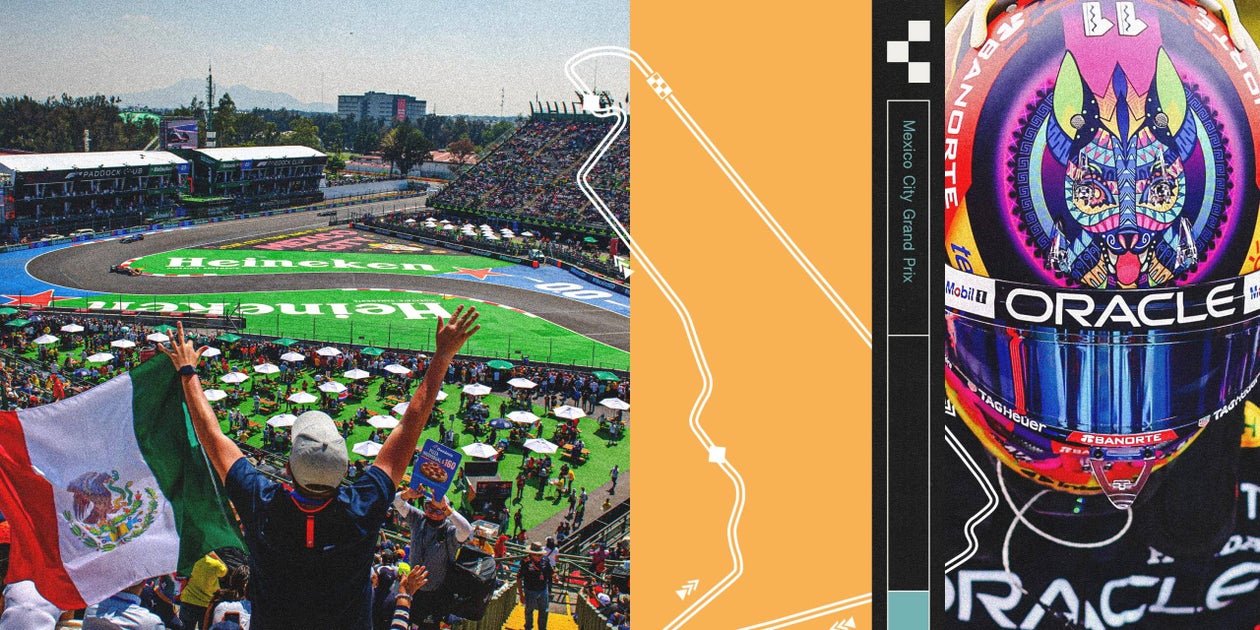MEXICO CITY — High altitude, low grip.
Formula One has arrived at one of the highest circuits on its calendar: Autódromo Hermanos Rodríguez. Compared to the Mile High City of Denver, which is 1,609.344 meters (one mile) above sea level, the Mexican track is just over two kilometers (nearly 1.5 miles). The next closest F1 track in terms of elevation is Brazil’s Autódromo José Carlos Pace (Interlagos), which sits at 800 meters (just under 0.5 miles). The change in altitude brings more obstacles than just thinner air; it also impacts engine power, cooling, and downforce, to name a few.
The circuit layout is similar to the initial 1959 track, aside from splitting the Peralta corner (Turns 16 and 17) and zipping through the old Foro Sol baseball stadium. The Autódromo Hermanos Rodríguez is nestled just southeast of the buzzing metropolis, and its paddock is decorated to the nines with Mexican culture. It’s a balance of passion, culture, and motorsport.
Before the drivers hit the track, here’s what you need to know about Mexico’s premier racing circuit.
How it all began
The track’s origins are captured in its name, which quite literally translates to “autodrome of the Rodríguez brothers.”
Ricardo and Pedro Rodríguez helped increase the popularity of motorsport in Mexico. According to F1, their father served as an advisor to Mexican President Adolfo Lopez Mateo. He suggested the president create a motorsport circuit using existing internal roads in Mexico City’s Magdalena Mixiuhca sports park. The president agreed, and the circuit was built less than a year later.
The initial complex offered a variety of layouts, including an oval. The original circuit, though, wasn’t named after the brothers at first. According to racingcircuits.info, the name was Autódromo Magdalena Mixhuca.
F1 didn’t arrive until 1962 with a non-championship grand prix, but it was marked by tragedy after Ricardo Rodríguez died during practice when his car overturned and caught on fire. The sport returned as a world championship event a year later, and Jim Clark dominated the grand prix. F1 stayed until the 1970s, but due to safety concerns, it was dropped until the mid-1980s. It underwent a renovation, and the sport returned from 1986 until 1992. But Mexico fell off the calendar until 2015.
The track was officially named Autódromo Hermanos Rodríguez in the early 1970s, shortly after Pedro Rodríguez’s death. He suffered fatal injuries during a sportscar race and died in the hospital in 1971.

A line of cars pass as a fan waves a Mexican flag during final practice for the Formula One Grand Prix of Mexico at Autodromo Hermanos Rodriguez on October 29, 2016 in Mexico City, Mexico. (Mark Thompson/Getty Images)
Why the altitude is a gamechanger
Lower air pressure and less air do affect the cars’ performance.
Take engine power, for example. F1’s modern-era cars are turbocharged, and the air is electronically compressed via the Energy Recovery System. Although the car can burn as much oxygen at this altitude as it can at sea level, the turbo works harder, putting more strain on the unit.
Additionally, air-dependent systems tend to struggle at tracks like this, and they’ll run hotter, which makes cooling more difficult.
And then there’s the tricky concept of downforce. Autódromo Hermanos Rodríguez is a shorter circuit with a long main straight, and typically, in this layout, teams would gravitate towards a low downforce car. The altitude, though, pushes the teams to have more downforce to gain speed, as fans see at Monza. The wings used in Mexico are more significant than the ones used in Italy.
What the paddock has to say
This circuit is special for Red Bull’s Sergio Pérez — it’s home.
“It’s the weekend that you want to be perfect, the weekend that you want to maximize your result,” he said Thursday. “And if there’s one particular grand prix that you want to win, it’s your home Grand Prix.”
But putting together a lap can be quite tricky. Sector 1 begins with the long main straight three corners and another straight before heading into the turn-heavy Sector 2. Esteban Ocon said, “If you are confident on braking here, it’s usually a good weekend for you. Turn 1 down, Turn 4 as well, there’s a lot of time to gain. And it’s very tricky, actually, because you are at such high speed with very low downforce that can make your lap gone in a second.”
The key, the Alpine driver said, is “nailing all the braking points and then not overheating your tires too much on those braking points leaves you to good grip in the slow speed corners and good exits.”
Nico Hülkenberg added that it’s a technical track where the drivers “always feel like you have to under-drive a bit. If you want to push too much, you very quickly pay a price, and you lose more than you gain, with the sensation of low downforce that you have in the car and this low-grip feeling.”
Autódromo Hermanos Rodríguez poses a challenge that pushes the drivers as close to the limit as possible. As Williams’ head of vehicle performance, Dave Robson, said in the team’s 2023 preview, “The cars need to be agile in the low-speed but remain stable in the high-speed section.”
This is an updated version of a story that first ran in October 2023.
Lead image design: Drew Jordan/The Athletic

